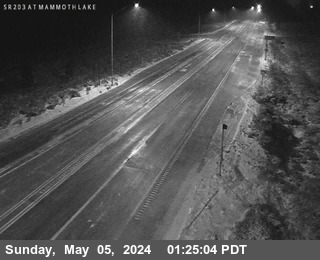Brought to you by Howard Sheckter
Archive for year 2015
Upper Trof firing one last short wave into Northern CA Wednesday….Long Wave Trof to shift east Thursday with upper ridging from the West building in over the weekend…..
Wednesday September 16, 2015
Monday AM:
Upper subtropical Low continues its recent track into Northern Baja limiting meaning moisture advection into Southern Mono County. Today Monday should be a carbon copy weather wise of Sunday, with high 70s once again this afternoon. Nighttime lows have been in the mid 40s here near the village of Mammoth. The forecast maps show high pressure aloft breaking down and shifting east this week. The focus by mid week shifts to the system in the Gulf of Alaska where a strong fall Trof will be deepening and shifting east into the pacific northwest. The initial effect for Mammoth Lakes this week will be a gradual cooling trend with highs cooling some 15 to 20 degrees over the next 7 days. That means that by this time next Monday, highs could be in the 50s. The forecast progs also suggest that the upper trof will deepen Wednesday into that following weekend with increasing wind. At this point in distance, that trof could bring the High Country some precipitation early next week. That could mean some light snowfall as well!
Next update Wednesday or Thursday…..
Dr Howard and the Dweebs……………………………..:-)
Sunday:
The updated track for the subtropical Low off the coast of Baja is more eastward for Tuesday and Wednesday, with the chances of rain for Mono County pretty slim. Even Bishop will not likely see much more than a slight chance of showers Tuesday/Wednesday.
Expect some cooling mid week but temps remaining at least 5 degree above normal the middle of this week. Latest forecast models “outlook” for the long wave Trof over the Eastern Pacific are leaning toward a gradual deepening the next 10 days with much cooler weather the following week and eventually the chance of precipitation during the final week of September. Through the change, the Dweeb Report will update more often.
———————————————————————————————————————————————————–
Moderate rain showers last night give Mammoth Lakes close to 2 tenths of an inch for a storm total of .28 inches between Monday and Wednesday AM, near the Village at Mammoth. One last short wave will move through and effect mainly Northern CA today. The main effect for Mammoth will be breezy conditions along with another below normal temperature day Wednesday. During the day Thursday, the main long wave Trof shifts east. This will allow temps to rise to near normal by Friday (upper 60s). Night time lows will be in the 30s, both Thursday and Friday mornings.
The next change in the pattern develops over the weekend with an upper ridge building in. This time from the west which is more fall like for this time of the year. This will bring a warm up with drier conditions and an off shore flow pattern. Most likely, a Santa Ana wind condition will push temps up in Southern CA. Good thing that they got lots of rain in the mountains Tuesday!
Outlook:
The longer range outlook shows above normal 500MB heights through at least Tuesday of next week with no precipitation. However, looking at both the ECMWF and GFS control and Ensembles, both show another Gulf of Alaskan Trof digging south the middle of next week and……picking up an upper low from the Subtropics. The ECMWF is strong with this scenario. So it is likely that the Pacific North West will get some heavy rain later next week and possibly as far south as Northern CA. Mammoth will be at least breezy and cooler with clouds. If the “Trend is further south” the Dweebs will let you know. In the meantime, the westerlies are gaining strength across the pacific seasonally…. I would not be surprised so see our first light snowfall on Mammoth Mt. (3 to 6 inches) by the end of the month and possibly a stronger storm in early to mid October. This is based upon the CFS vs2 today.
Just in: Something to keep an eye on…..
The new Wednesday 12z run of the NCEP GFS T 1534
Shows another subtropical low being picked up by the next trof for next week with more possible heavy rain chances for coastal So-Cal….next Tuesday. This is another subtropical system like last Tuesdays system, without the hurricane moisture.
Caveat; This is only a one model run so stay tuned… Dweebs will update later in the week on this….
Comments:
It is no surprise that Southern CA has experienced a very humid Summer, especially along the coast. Many folks do not have air conditioning on the immediate coast and so it has been quite uncomfortable. Sea surface temps have been reported as warm as high 70s along the So-Cal coast. This is much like the eastern seaboard, only without the gulf coast Bermuda High induced humidity. Warmer then normal SSTAs the past couple of years has been a change from the previous years. This was induced by a flip in the PDO from negative to positive. The positive phase of the PDO; (Pacific Decadal Oscillation) is highlighted by cooler than normal waters over the NW pacific extending eastward to the Mid Pacific and Warmer then normal SSTs along the west coast of North America. Although, there is a relationship between El Nino and the PDO, not all +PDO are associated with El Nino.
So the very warm waters along the west coast a year go were not associated with El Nino because we did not have one. However, the makings of one was in the future as hindsight is 20-20. The main point is that extensive warm water along the west coast is not always associated with EL Nino. However at this time, it probably is indirectly from the oceanic KV’s that have since moved through the Tropical Pacific.
El Nino:
Still strengthening. It is still expected to strengthen through the Fall and peak by years end. It will then weaken through the Winter and dissipate by Spring. Within two years, ENSO will most likely flip to La Nina conditions with the PDO flipping to negative as well. Thus cold water along the west coast of North America would follow….including the demise of the “big blob”. Actually the “Big Blob” will probably be gone by next Summer, if not sooner.
Other Thoughts:
What happens after the Winter of 2015/2016.
Just some speculation of course… I have read that there is a correlation of winters out west with the Sunspot Cycle. The number of normal to above normal winters are higher after the solar peak and down through the Trof of the cycle.
It has been confirmed that the current solar cycle has peaked with the number of sunspots on a monthly bases dropping off dramatically. Might that mean that for the west, we are in for a number of wet years? Take notes on this one….
Well See…..
Dr Howard and the Dweebs…………………….:-)
*Toms Corner:
(For the amateur meteorologist and some pros as well!)
THETA-E
THETA-E (Equivalent Potential Temperature) is the temperature that results after all latent heat is released in a parcel of air and the then brought adiabatically to the 1000 mb level. THETA-E increases as dew point and/or temperature increases. How is theta -e computed off a Skew-T diagram? First determine the pressure level of interest. Locate the temperature and dew point at that pressure level. Raise that parcel adiabatically from that pressure level to the 200-mb level. Next, bring the parcel down dry adiabatically to the 1000 mb level. The temperature once the parcel is at 1000 mb is the THETA-E. Why is Theta-e important? Theta -E is a measurement of the total sensible and latent heat of an air parcel and is useful in tracking the an air mass characteristic whether tropical or arctic. High theta-e values are associated with the potential for severe or flash flood producing thunderstorms and areas of tropical storm or hurricane formation in that theta-e is the fuel that will allow for high CAPE (convective available potential energy) environments to develop. From a climatology perspective flash flood producing thunderstorms are associated with anticyclonicaly curved theta-e ridges while severe thunderstorms form along theta-e gradients and ridges that are cyclonically curved. Theta-e advection show areas of moisture and/or temperature advection that can lead to areas of potentially higher CAPE values. High theta-e values just like high PW (Precipitable water values) do not lead to higher thunderstorm activity until they are converted to high CAPE values through increased lapse rates mainly through vertical motion and differential temperature advection (low level warming and upper level cooling). Thus while a remnant tropical storm or Monsoon circulation may be a high theta-e and PW environment it must be converted to positive CAPE environment in order reach the “critical mass” or flash point needed to be triggered into thunderstorms . Often a lingering high theta-e and pw air mass will remain latent for several days until acted on by a short wave trough, vort max , jet max or other dynamic feature (convergence/divergence couplet) that will lead to positive CAPE values or less than zero LI (lifted index) and resulting deep convection.
*Tom Cylke is a retired Meteorologist with the National Weather Service (WSFO-KRNO) for some 30 years and has been published on a number of occasions.
He is a Super Dweeb! 😉




